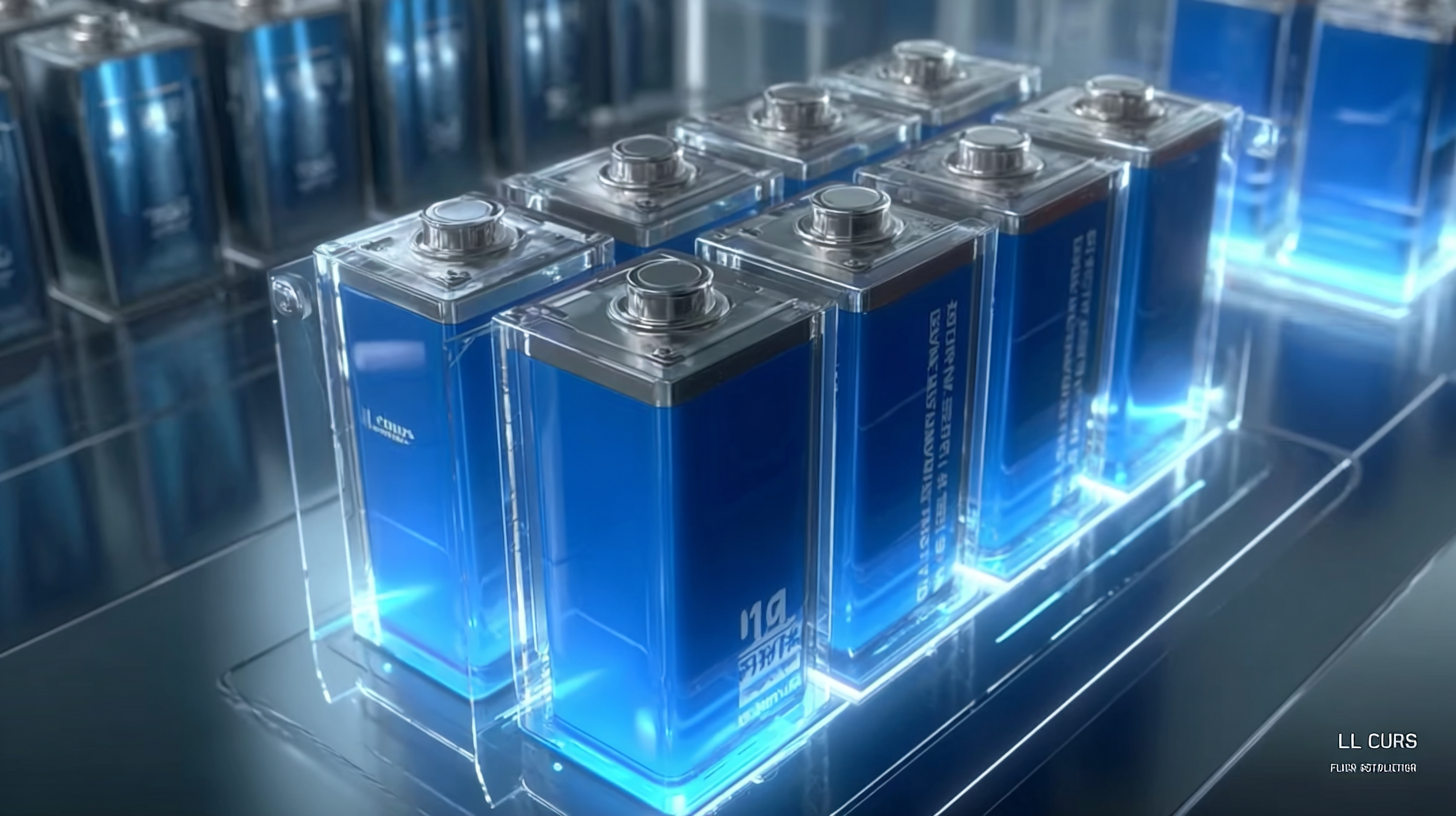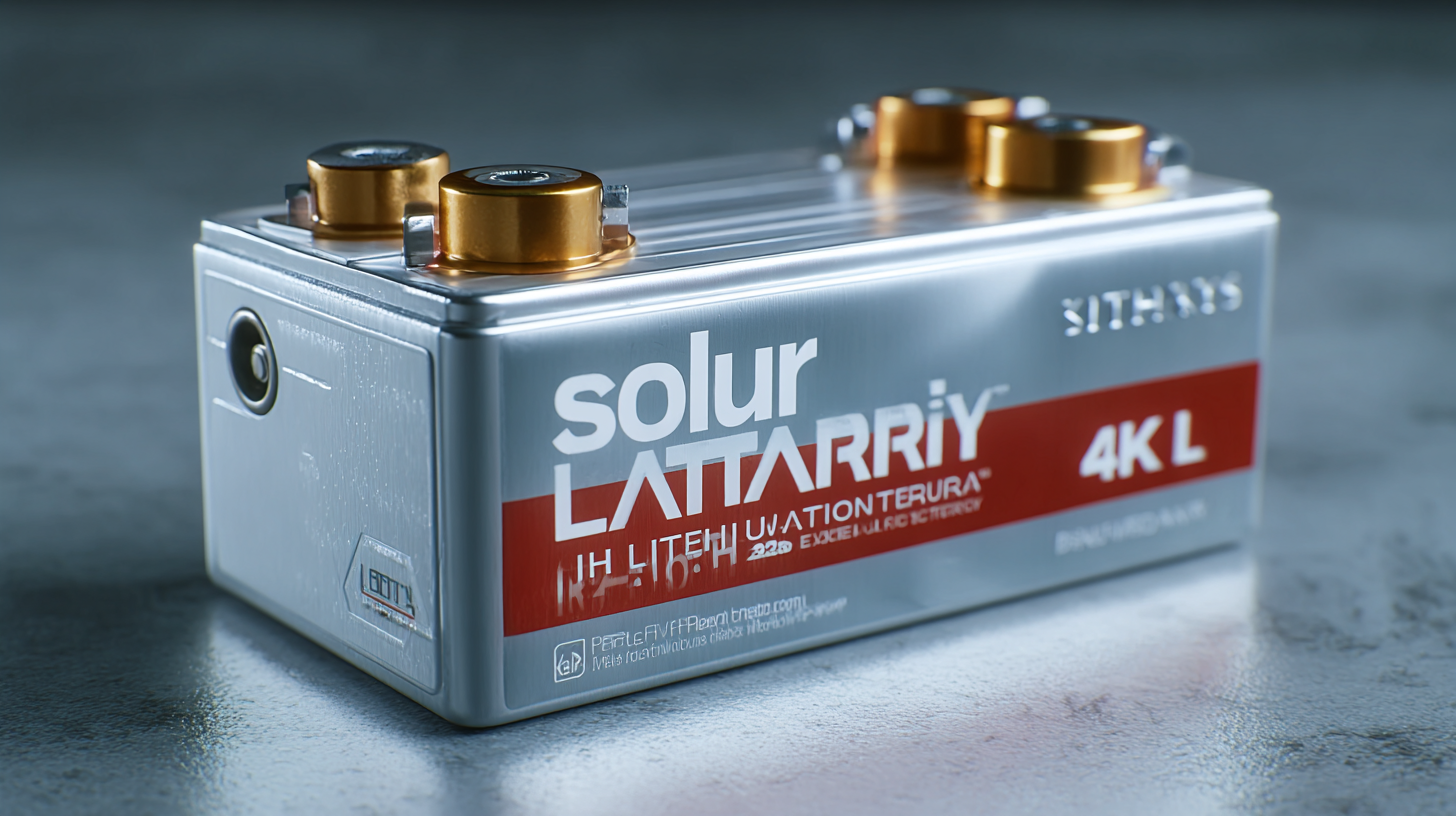Future Trends in Solar Lithium Battery Technology by 2025 and Its Advantages for Renewable Energy Solutions
As we approach the midpoint of the decade, the integration of Solar Lithium Battery technology in renewable energy solutions is poised to transform the industry. According to a recent report by the International Energy Agency, solar energy capacity has grown exponentially, increasing by over 20% annually since 2010, and predictions suggest that by 2025, solar power generation could account for nearly 20% of global electricity generation. The adoption of advanced Solar Lithium Batteries is crucial to this expansion, as they provide efficient energy storage, enhancing the reliability of solar power systems. Industry experts highlight that these batteries not only improve the performance of solar installations but also mitigate challenges related to energy intermittency. Moreover, with lithium-ion battery prices declining by approximately 80% since 2010, the economic viability of Solar Lithium Batteries has never been better, offering a sustainable path forward in the quest for cleaner energy solutions.

Future Innovations in Solar Lithium Battery Design and Longevity by 2025
The future of solar lithium battery technology is rapidly evolving, with innovations envisioned by 2025 focusing on design enhancements and increased longevity. One of the promising advancements is the integration of new anode materials, such as silicon or graphene, which are projected to increase energy density dramatically. According to a recent report by Research and Markets, the global lithium-ion battery market is expected to grow at a CAGR of 17.3%, reaching approximately $129 billion by 2027. Such growth will push engineers to design batteries that not only last longer but also charge faster, making them more efficient for solar energy applications.
To maximize the benefits of these innovations, it's important to implement regular maintenance of solar lithium battery systems. Keeping connections clean and ensuring operational temperatures remain stable can significantly enhance the lifespan of the batteries. Furthermore, utilizing smart energy management systems can optimize power usage, ensuring the battery operates within its ideal parameters. Industry trends suggest that with improvements in thermal management, future batteries could achieve lifespans exceeding 15 years, far surpassing current averages.
Investing in advanced battery technology will also unlock new possibilities for energy storage solutions. By 2025, we could see the emergence of batteries equipped with self-healing capabilities or enhanced recycling processes, making solar lithium batteries not just a reliable power source but also a sustainable choice. As the demand for renewable energy solutions continues to grow, embracing these technological advancements will be crucial for both consumers and businesses alike.
Future Trends in Solar Lithium Battery Technology by 2025 and Its Advantages for Renewable Energy Solutions
| Trend | Description | Advantages | Expected Impact |
|---|---|---|---|
| Increased Efficiency | Advancements in materials and design aimed at enhancing energy conversion efficiency. | Higher energy output, lower costs per watt. | Boosts adoption of solar technology in various applications. |
| Longer Lifespan | Development of batteries that can withstand more charge cycles without degradation. | Reduced replacement costs, better investment for consumers. | Increases the viability of solar-powered solutions. |
| Sustainable Materials | Incorporation of eco-friendly materials in battery production. | Lower environmental impact, enhanced public perception. | Encourages sustainable practices in energy sectors. |
| Smart Technology Integration | Integration of AI and IoT for better energy management and monitoring. | Increased efficiency, real-time data analytics. | Improves user experience and energy consumption management. |
| Cost Reduction | Innovation in manufacturing processes and raw materials to cut down costs. | More affordable solar solutions for consumers. | Promotes wider access to renewable energy technologies. |
Cost-Effective After-Sales Support for Solar Lithium Battery Systems
As the demand for renewable energy solutions continues to grow, solar lithium battery systems have emerged as a pivotal technology in this transition. One key aspect that companies must address is the importance of cost-effective after-sales support. According to a report by the International Energy Agency (IEA), battery storage systems are projected to reduce in cost by up to 60% by 2025, making them more accessible for both residential and commercial applications. This decline in price not only enhances market adoption but also emphasizes the necessity for robust support structures to ensure optimal performance over the battery's lifespan.
Effective after-sales support can significantly influence customer satisfaction and retention. An insightful report from BloombergNEF highlighted that over 50% of users felt that post-purchase service was fundamental to their overall experience with battery systems. Offering cost-effective maintenance plans, round-the-clock technical assistance, and easy-to-access online resources can empower users while also extending the operational life of the solar lithium batteries. By focusing on these support mechanisms, companies can not only enhance their service offerings but also contribute to the sustainability and efficiency improvements that are critical to the growth of renewable energy.
Analyzing the Repair and Maintenance Expenses of Solar Battery Solutions
The growing reliance on solar energy necessitates a deep dive into the repair and maintenance expenses associated with solar battery solutions.
As solar lithium batteries become a cornerstone of renewable energy systems, understanding the cost implications of keeping these systems operational is crucial for homeowners and businesses alike.
While the upfront costs of solar battery installations can be substantial, ongoing maintenance and repair costs can vary significantly depending on the technology and usage patterns.
Regular maintenance not only ensures optimal performance but also prolongs the lifespan of the batteries, making it an essential aspect of budget considerations.
Moreover, as battery technology advances, warranty options and service agreements are evolving to offer better protection against potential failures.
Many manufacturers now provide comprehensive maintenance packages that include routine check-ups and performance assessments.
By choosing a reliable service plan, users can mitigate unexpected repair costs, allowing for more predictable budgeting.
Additionally, the increase in DIY repair knowledge available online empowers users to handle minor issues, further reducing maintenance expenses.
Ultimately, effective management of repair and maintenance costs will play a pivotal role in maximizing the benefits of solar lithium battery solutions as we move toward 2025.
Impact of Enhanced Recycling Processes on Lithium Battery Sustainability
The sustainability of lithium batteries is significantly influenced by enhanced recycling processes, a critical factor as the global demand for renewable energy solutions accelerates. According to a report by the International Energy Agency (IEA), the market for lithium-ion batteries is expected to reach 2,500 GWh by 2025, driven primarily by electric vehicles (EVs) and renewable energy storage. As battery production increases, so does the imperative for efficient recycling systems that can recover valuable materials such as lithium, cobalt, and nickel.

Enhanced recycling technologies, such as hydrometallurgical and biotechnological methods, are proving to improve material recovery rates, with recent advancements suggesting recovery efficiencies of up to 95% for certain metals. A study published in the Journal of Cleaner Production highlighted that closed-loop recycling systems not only reduce resource extraction pressure but also decrease greenhouse gas emissions associated with battery production. As the industry shifts towards a circular economy, it’s essential for manufacturers to integrate these recycling innovations to enhance sustainability and mitigate the environmental impact of lithium battery production. The strategic alignment of recycling processes with renewable energy initiatives is pivotal in fostering a greener future.
The Role of Smart Technology in Optimizing Battery Performance and Efficiency
 The advancement of smart technology is transforming the landscape of solar lithium battery performance and efficiency. By 2025, we can expect significant improvements in battery management systems (BMS) that utilize artificial intelligence (AI) and machine learning algorithms. These technologies will enable batteries to intelligently monitor their health, optimize charging cycles, and predict energy usage patterns, thereby extending their lifespan and enhancing overall performance. The integration of IoT devices can facilitate real-time data collection, providing users with invaluable insights into their energy consumption and battery status.
The advancement of smart technology is transforming the landscape of solar lithium battery performance and efficiency. By 2025, we can expect significant improvements in battery management systems (BMS) that utilize artificial intelligence (AI) and machine learning algorithms. These technologies will enable batteries to intelligently monitor their health, optimize charging cycles, and predict energy usage patterns, thereby extending their lifespan and enhancing overall performance. The integration of IoT devices can facilitate real-time data collection, providing users with invaluable insights into their energy consumption and battery status.
Furthermore, smart technology will play a pivotal role in maximizing the efficiency of solar lithium batteries in various renewable energy applications. For instance, energy storage systems equipped with smart features can dynamically adjust to fluctuations in energy production and demand, ensuring that solar power is utilized effectively. This adaptability not only reduces waste but also contributes to a more stable energy grid. As a result, the synergy between smart technology and solar lithium batteries will not only bolster the renewable energy sector but also align with broader sustainability goals, paving the way for a greener future.
